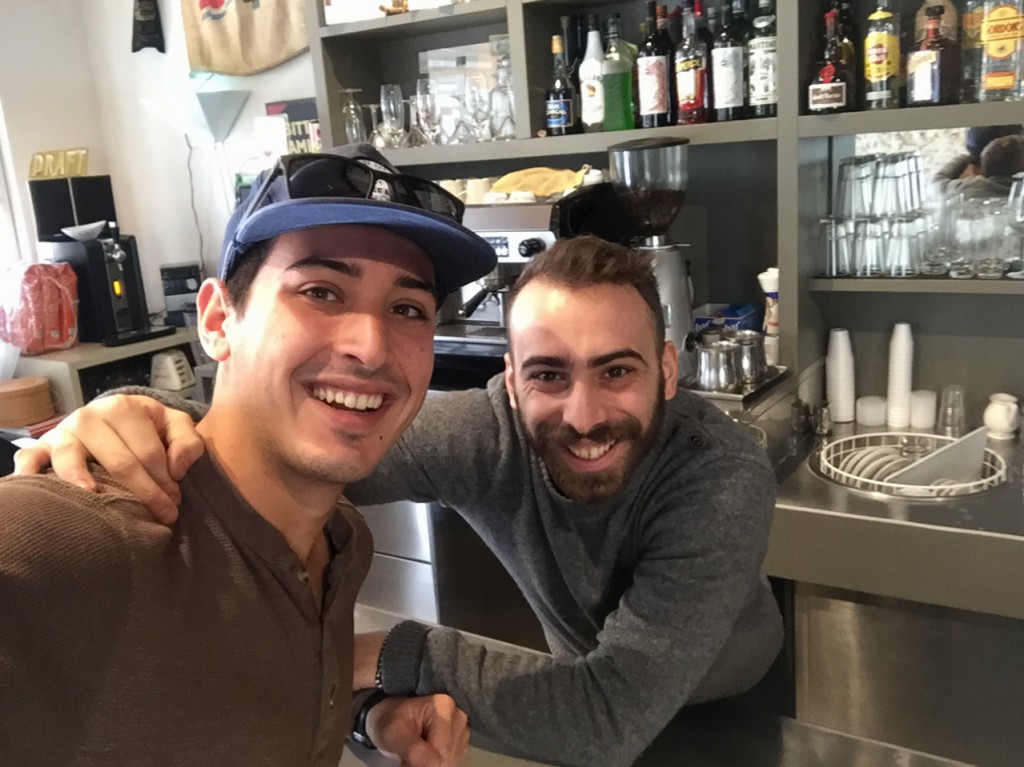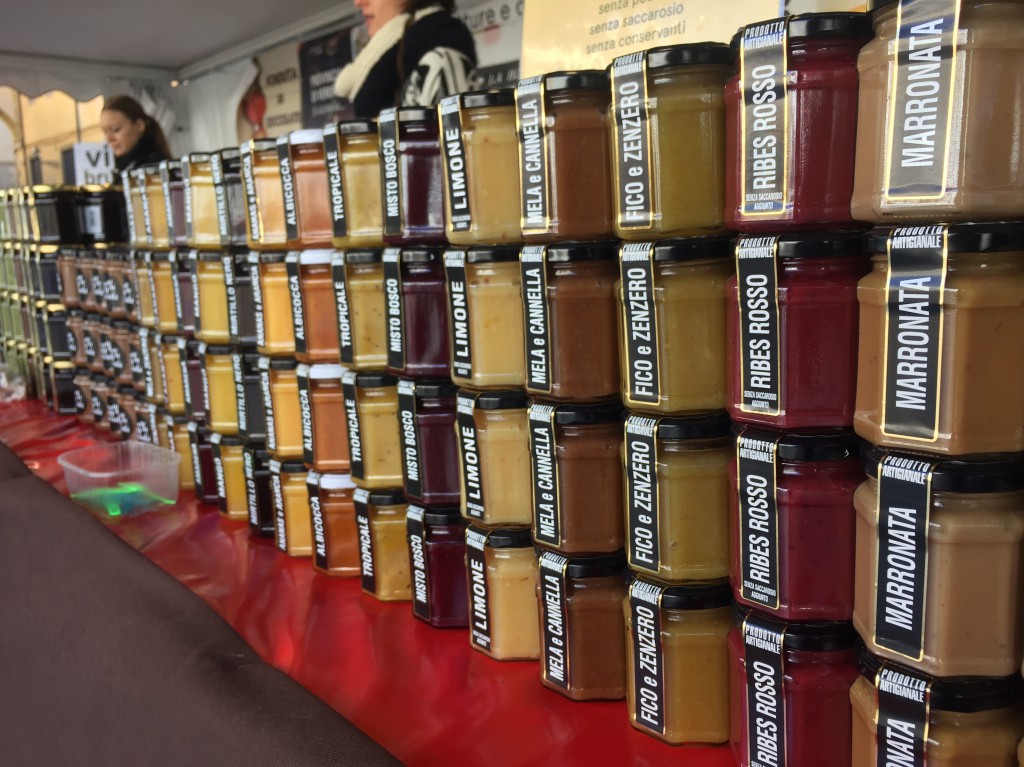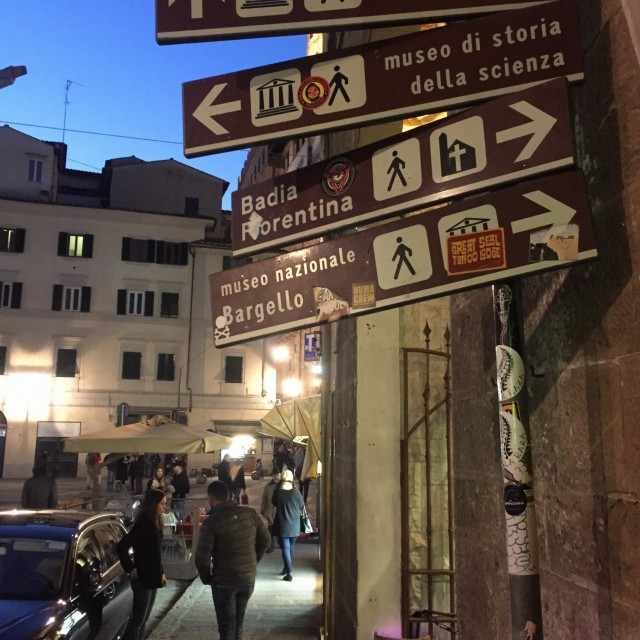Ciao! This is the first foreign word you start using in Italy. No matter how well you know someone or where they are from you will find yourself greeting people with this phrase.
The Italian language is very different from English. I came here thinking there was no way I could ever have full blown conversations in Italian, but now I am finding it is easier to pick up than I thought. Just the other day I found myself engaging in a conversation in only Italian. It was butchered and slow Italian, but I wasn’t speaking English. I took three years of Spanish in high school which has helped because the two languages are similar. They are so similar in fact that when I find myself unable to communicate in Italian, I can use Spanish and I will usually be understood.
 |
| Me and Andrea, my Italian friend who works at the local "bar" (coffee shop)! |
I try to avoid using English as much as possible. When you speak English to Italians, most of them respond in English and you will be just a tourist to them. If you attempt to speak Italian, they not only see this as a sign of respect, but they start to remember you and treat you like a friend. I go to the same bar every morning for my cappuccino. In Italy, a “bar” is a coffee shop. There are two brothers who work at this bar and I always try to speak in Italian with them. They help me when I cannot think of a word, and I likewise help them with their English. Two phrases you cannot live without in Italy are “come si dice," meaning "how to you say," and “que significa…”, meaning “what does … mean.” Going out of my way to use and learn the language helps me both to succeed in class and integrate into the culture, making local friends. The two brothers at the coffee shop I know very well now and we talk every day!!
 |
| Balsamo e Shampoo in Italia. |
The most challenging part of the language barrier is translating words at the market or in the grocery store. The first day I was here, I was struggling to find body wash and conditioner because I couldn’t read the Italian labels. Luckily shampoo is still shampoo in Italy. I learned quickly that “balsamo” is conditioner. Body wash on the other hand, I spent 10 minutes looking through the soaps to find. It also took me a couple of weeks before I learned how to differentiate between the different types of milk as well! An interesting thing to note is that whole milk, or "latte interno," in Italy is actually 3% milk vs. the 10% whole milk in the States.
 |
| Latte in Italia. |
At the market, fruits and vegetables are easier to find because they look familiar. When I found myself at a jam stand this week though I had no idea which type of jam was in which jar. In addition to this most of the vendors at the markets don’t speak English. You need to know how to ask for something in Italian. Some common phrases to use while ordering something or asking for something at the market include “Vorrei un…” and “Per mi un … per favore.”
 |
| Marmellata, or jam, al mercato. |
When it comes down to it, while studying abroad in Italy you can get by without knowing much Italian. Most people speak enough English to help you. The question you need to ask yourself though is whether you want to be a stereotypical tourist or someone who dives into the culture and becomes a local while in Italy? I decided to be a local, which is why I attempt to use Italian as much as I can. If I have trouble, I ask for help in translation. This not only results in a better cultural experiences, but the locals like it a lot more. While living in a place where your language is not the universal language imposes difficulty, it also challenges you to break out of your shell and learn about a different culture though that language! I love learning how to speak more Italian each and every day, and I wouldn’t trade this experience for the world!
Anthony R. is the Spring 2017 MOJO Blogger in Florence, Italy. He is currently a Sophomore studying Business Administration at Santa Monica College.











